Do you have a question about the Whirlpool Duet 461970255001 and is the answer not in the manual?
Crucial precautions to reduce the risk of fire, electric shock, or injury when using the washer.
Warnings about chemicals in the product that may cause cancer or birth defects/reproductive harm.
Lists necessary tools and parts required for the washer's installation.
Details available optional accessories like pedestals and stack kits for the washer.
Provides recommended spacing dimensions for various installation types (undercounter, recessed, closet).
Displays the physical dimensions of the washer unit itself.
Explains the requirements for standpipe drain systems, including dimensions and capacity.
Details the requirements for draining the washer into a laundry tub.
Outlines the requirements for using a floor drain system, including siphon break needs.
Explains essential grounding instructions for electrical safety and proper appliance function.
Step-by-step guide on removing transport bolts and securing the washer for operation.
Detailed instructions on how to properly connect the hot and cold water inlet hoses.
Guide on how to connect the drain hose to the washer and drain system.
Instructions on how to properly secure the drain hose to prevent issues.
Steps to ensure the washer is level, crucial for reducing noise and vibration.
Final checks and steps to complete the washer installation successfully.
Describes the user-friendly electronic controls and their flexibility.
Explains the automatic four-compartment dispenser for laundry products.
Details the steam feature for enhanced stain removal and temperature control.
Describes the cycle for self-cleaning the washer using steam and cleaner.
Explains how the washer automatically adjusts water level for optimal performance.
Highlights the benefit of washing larger items due to the absence of an agitator.
Discusses the benefits of the stainless steel drum for durability and efficiency.
Explains how the HE system saves time, water, and energy.
Details the adjustable spin speeds available on the washer.
Describes the heating element that automatically adjusts water temperature.
Explains the intelligent control system that senses load conditions.
Details the system that ensures thorough product distribution and rinsing.
Describes the valve system that ensures efficient use of water and detergent.
Explains the suspension system designed to reduce noise and vibration.
Describes the feature allowing adding clothes during the initial minutes of a cycle.
Provides essential safety warnings and initial steps for operating the washer.
Emphasizes the requirement for High Efficiency (HE) detergents and their benefits.
Instructions for running an initial cleaning cycle before washing clothes.
General steps applicable to all wash cycles, including loading and selecting settings.
Step-by-step guide on how to correctly fill the detergent and softener dispensers.
Detailed advice on selecting and using High Efficiency detergents for optimal results.
Instructions for using oxygen-based bleach or color-safe bleach in the dispenser.
Guidance on using HE detergent in the main wash compartment, including detergent selector use.
Instructions for using liquid chlorine bleach in the designated compartment.
Guidance on how to properly add and dilute liquid fabric softener.
How to pause and resume the wash cycle.
Instructions on how to change cycle settings before or after a cycle begins.
Steps to manually drain the washer if needed.
Explains the meaning of various status lights on the control panel.
Details the 8-minute window to add garments after the cycle starts.
Information about the NSF-certified Sanitize cycle and its bacteria reduction capabilities.
How to lock and unlock the control panel to prevent unintended changes.
How the washer adjusts cycle time based on load conditions.
Cycle for heavily soiled white fabrics, optimized for bleach activity.
Cycle for sturdy, colorfast fabrics and heavily soiled garments.
Cycle designed for large items like blankets and comforters.
Cycle for small loads of exercise wear and performance clothing.
Cycle for everyday fabrics like shirts, blouses, and cotton blends.
Cycle for sheer fabrics and lingerie, using low-speed tumbling.
Cycle for washable woolen garments, featuring gentle tumbling.
Cycle for silk, with gentle tumbling and no spin for minimal wrinkling.
Cycle for hand-washable items, mimicking hand washing.
Cycle for small, lightly soiled items needed quickly.
Cycle for monthly cleaning of the washer interior using cleaner.
Cycle to help remove set-in stains via soaking.
Cycle for rinsing and spinning loads without a wash.
Cycle to drain water or drain and spin the load.
Describes normal sounds the washer makes during operation.
Explains how to customize wash cycles with various options.
Allows scheduling the start of a wash cycle for a later time.
Keeps clothes fresh with tumbling and airflow after the cycle ends.
Option for enhanced stain treatment and temperature control using steam.
Option for optimized treatment with oxygen-based stain fighters.
Reduces noise by adjusting spin speed for quieter operation.
Provides audible signals for cycle completion or button presses.
Details how to change settings like Water Temp, Spin Speed, and Soil Level.
Guidance on selecting appropriate water temperatures for different loads.
Explains Extra Rinse and Max Rinse options for better detergent removal.
Chart matching cycles with suggested load types and available options.
Recommendations for preparing garments, including detergent use and garment care.
Guidelines for sorting laundry by soil level, lint properties, color, and fabric type.
Advice on promptly unloading the washer and checking the door seal.
Examples of load suggestions for various garment types.
Instructions for cleaning the door seal to prevent stains and foreign objects.
Details the monthly maintenance procedure using a special cycle with cleaner.
How to clean the exterior of the washer.
Instructions for removing and cleaning the dispenser drawer and its parts.
Advice on replacing and maintaining water inlet hoses for safety.
Steps to take when the washer will not be used for an extended period.
Instructions for winterizing the washer to prevent freezing damage.
Instructions for reinstalling the washer after transport, including initial use.
Explains common error codes like F20, F21, F22, and SUD.
Troubleshooting steps for when the washer fails to start.
Solutions for issues related to the washer not filling, washing, or rinsing.
Troubleshooting steps for when the washer unexpectedly stops during a cycle.
Steps to resolve issues where the washer fails to drain or spin.
Explains common causes of noise and vibration and how to fix them.
Troubleshooting steps for leaks originating from the washer or its connections.
Solutions for problems with clogged or leaking detergent dispensers.
Advice on preventing and removing odors from the washer.
Reasons why laundry might be too wet after a cycle and how to address it.
Troubleshooting steps for finding residue or lint on washed clothes.
Solutions for dealing with stains that may appear on clothes after washing.
Checks on HE detergent usage, sorting, and prompt unloading for best results.
Addresses issues with fabric softener balls, powdered detergent in low-speed cycles, and Quick Wash loads.
Troubleshooting steps for wrinkled loads, including cycle selection and load size.
Solutions for dingy whites or colors due to improper sorting or water temperature.
Explains reasons for longer cycle times and how to resolve door lock issues.
Information on ordering FSP® Factory Specified Parts for the appliance.
How to find local FSP® parts distributors or service centers.
Contact information for writing to Whirlpool with questions or concerns.
Lists available premium accessories to enhance washer functionality.
Outlines the terms and conditions of the limited warranty for the appliance.
Lists specific items and conditions not covered by the limited warranty.
States limitations on implied warranties like merchantability or fitness for purpose.
Explains limitations on remedies and exclusions for incidental or consequential damages.

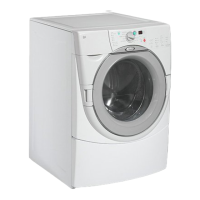
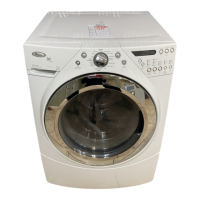



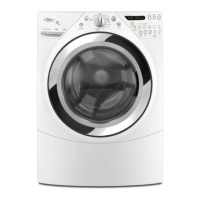



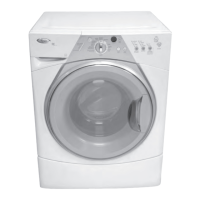
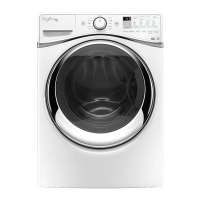
